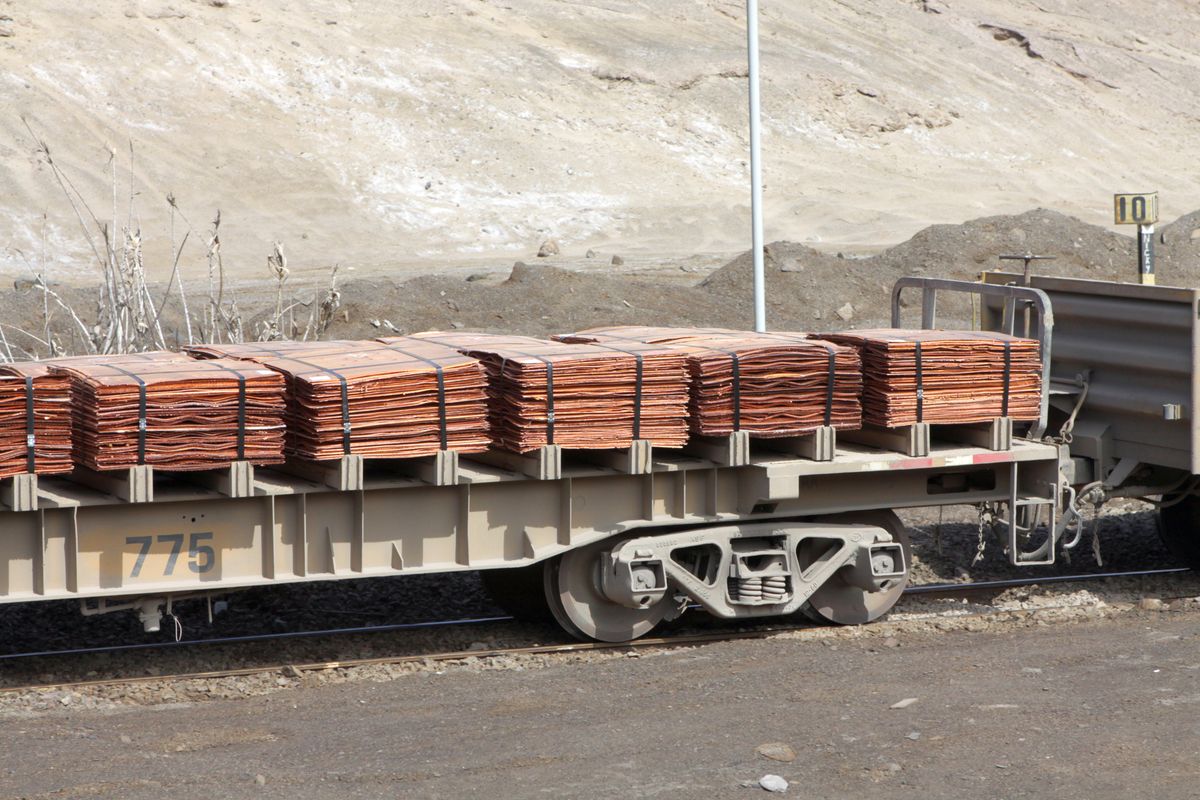Copper in China – How economic shifts are influencing the market
Copper demand hasn't been as strong as expected in China, even during its usual spike in the autumn season.

A few minutes every morning is all you need.
Stay up to date on the world's Headlines and Human Stories. It's fun, it's factual, it's fluff-free.
The backstory: In the world of commodities, China, the largest consumer of copper globally, is grappling with a complex situation involving this metal. Copper is often seen as a sign of how the economy’s doing – when it's in high demand, it indicates a thriving economy. But, recent developments have added a layer of uncertainty.
China has been steering toward cleaner energy sources. That's great news for copper since it's a key player in electric vehicles (EVs) and renewable energy. But the country’s economy has faced challenges, with its initial goal of a 5% growth rate for the year now in doubt. Plus, the nation’s population is declining, and the post-COVID economic bounce-back has been slower than expected. To counter these issues, Beijing has pursued strategies like wooing foreign investments and reducing borrowing costs.
More recently: Copper demand hasn't been as strong as expected, even during its usual spike in the autumn season. The metal is essential in construction, which has been shaky due to a property market crisis. It’s also important in consumer goods. but cautious spending is affecting that sector. On the positive side, power generation, particularly in renewables and EVs, is thriving and aligning with China's environmental goals.
Consumers are now increasingly looking for more affordable alternatives, and it’s led to a drop in copper prices. This is making it harder for businesses in the industry to maintain healthy profits. In fact, Chinese copper smelters and processors have faced their worst profitability in over a decade during the first seven months of this year, according to the National Bureau of Statistics.
The development: Even though the peak copper season in China is over the next few months, the numbers aren’t looking great. In the first half of this year, the market witnessed a 6.3% surge in demand for refined copper, as reported by Bloomberg. This was mostly driven by the adoption of clean energy and people buying appliances like air conditioners as global temps are getting hotter. But looking ahead, an analyst from Guotai Junan Futures suggests that the growth forecast for the second half is more moderate, possibly slowing down to 3.9%.
While there's still some demand for copper, it faces stiff competition from budget-friendly alternatives, keeping copper prices on the lower side and making investors more cautious. As of publication, copper futures were holding at around US$8,300 a ton. On top of that, a quarter of China’s copper demand comes from construction, according to Citigroup Inc., which is still being hit hard by the property crisis.
Key comments:
"With such limited inventory cover in China and on Western exchanges, we see significant right-tail risk to the copper price if, for example, there was a material supply disruption or upside surprise in China policy support announcements," said Goldman Sachs in a report in August. "Indeed, our dialogue with the investment community so far in Q3 suggests interest in copper downside has now dissipated and buying copper dips is the predominant strategy."
"Copper stock data is no longer important for us to assess market supply and demand," said Zhang Kaimin, a purchasing manager at Hubei Shidai Refined Copper Technology.
"The biggest risk will arise from China being unable to stimulate growth significantly in the country from current levels," said StoneX analyst Natalie Scott-Gray.




Comments ()